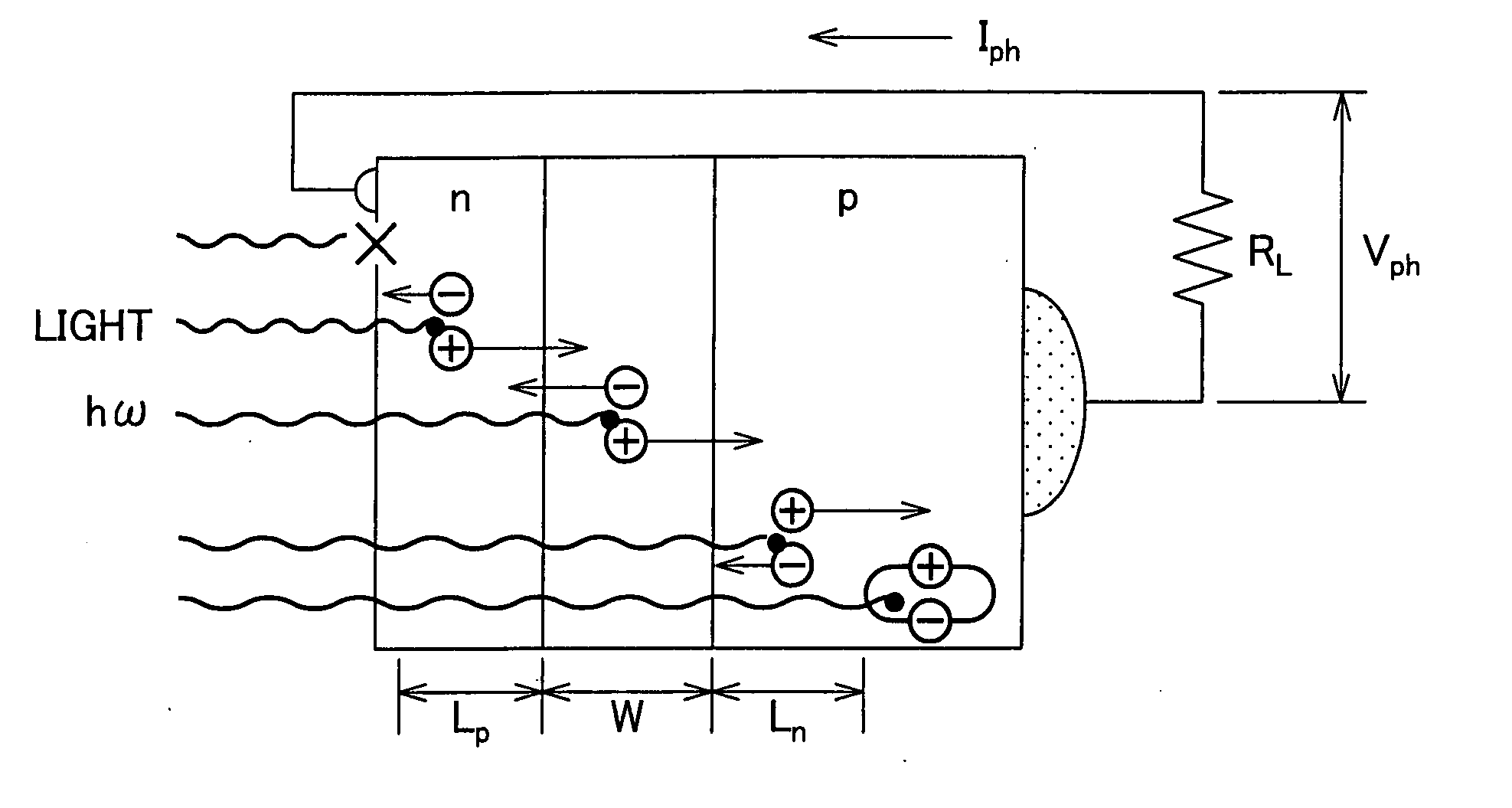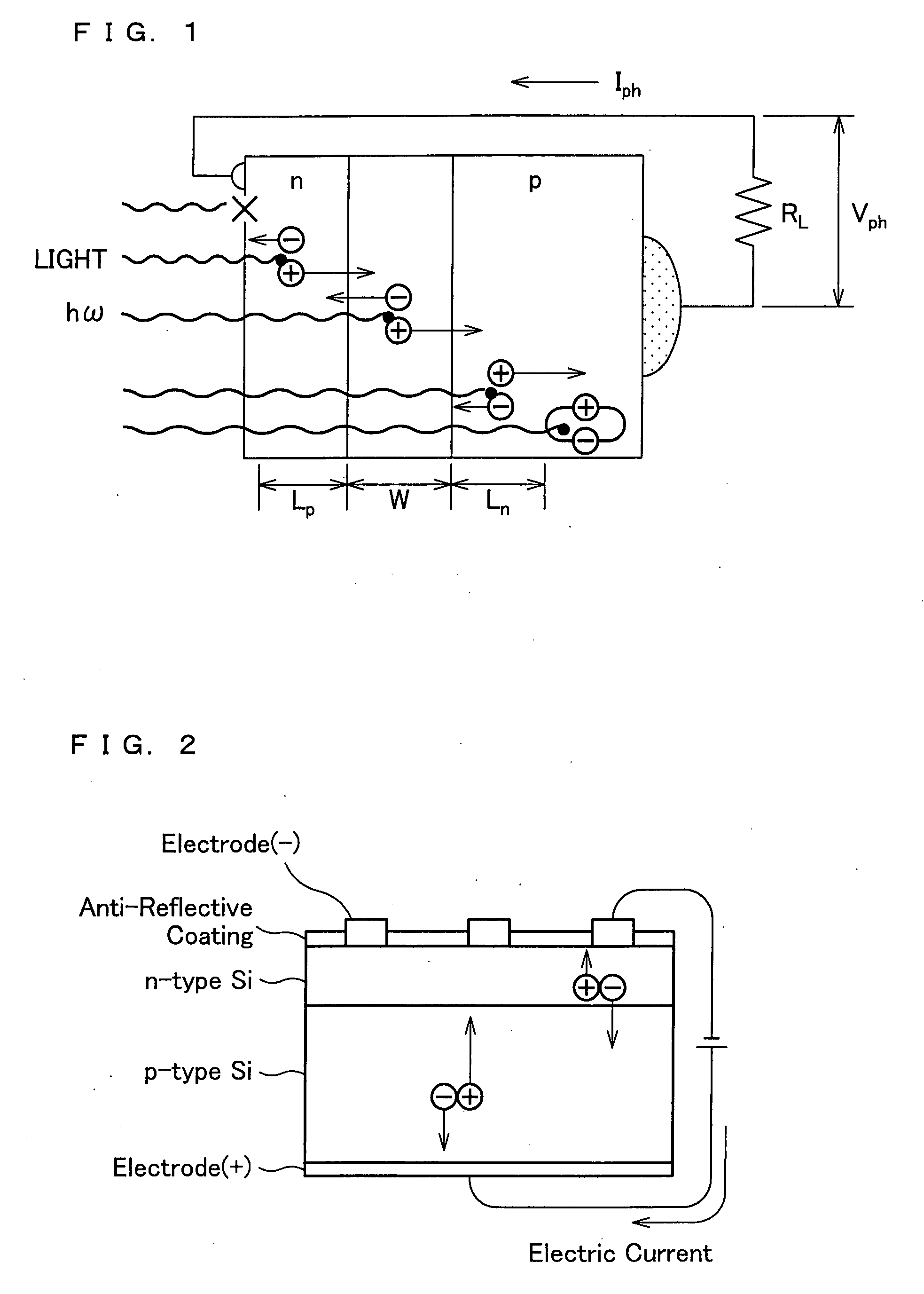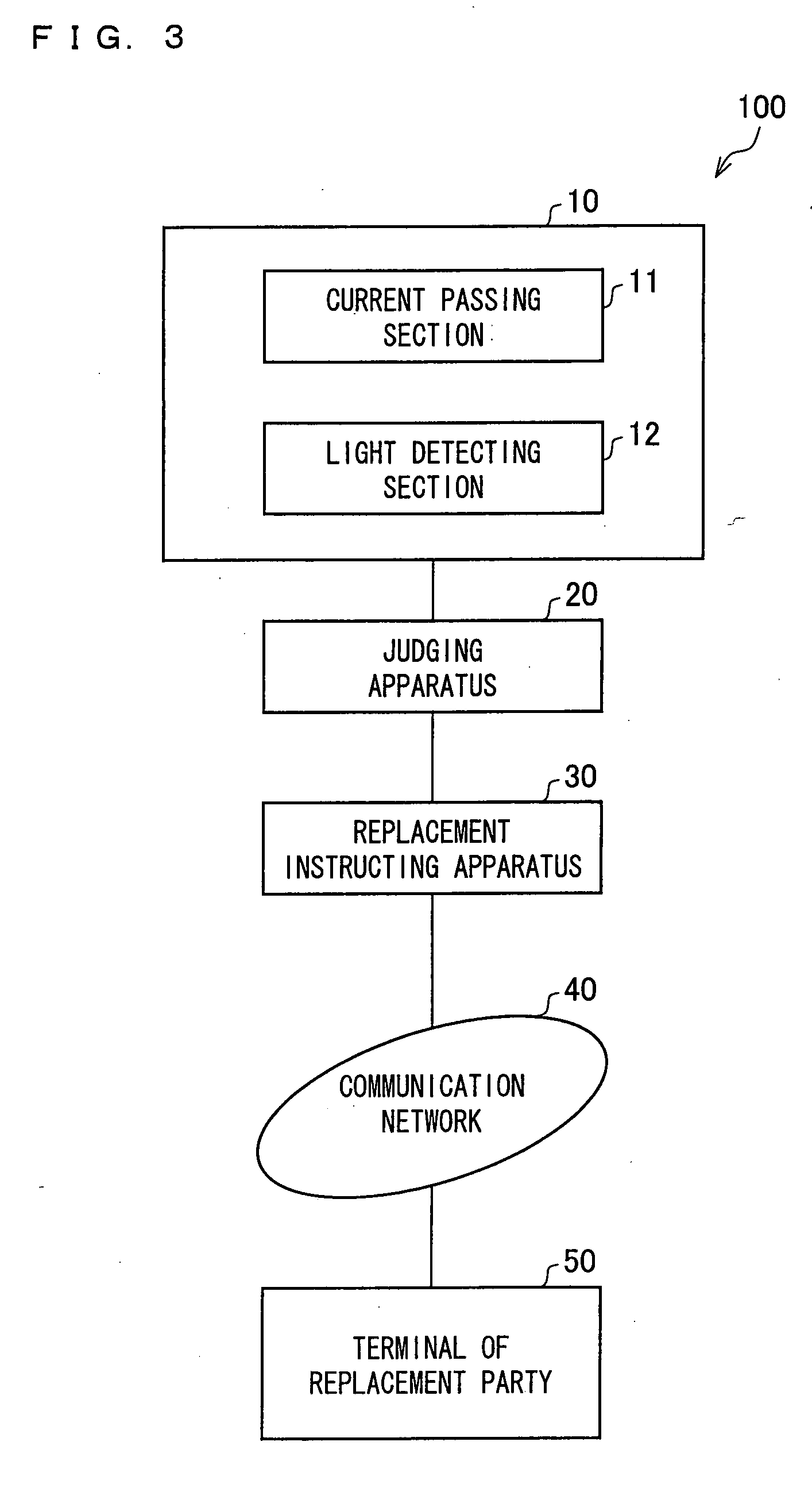Method And Apparatus For Evaluating Solar Cell And Use Thereof
a solar cell and output characteristic technology, applied in the field of methods, can solve the problems of high cost of solar cells made of si (silicon) or the like, impede the wide use of solar cells, and high cost of solar cells, and achieve the effect of reducing the cost of solar cells
- Summary
- Abstract
- Description
- Claims
- Application Information
AI Technical Summary
Benefits of technology
Problems solved by technology
Method used
Image
Examples
example
[0196] A Si solar cell element made from polycrystalline silicon semiconductor was analyzed by passing a forward current in a range of 5 to 40 mA / cm2. In the present Example, an emission microscope (Hamamatsu Photonics K.K. PHEMOS-200) was used. The Si solar cell element was 1 cm×1 cm in size. Images picturing the Si solar cell element through which the current was passed are illustrated in FIGS. 5(a) and 5(b). FIG. 5 (a) illustrates light emission from the Si solar cell element, while FIG. 5(b) illustrates a diffusion length of the minority carrier (electrons) in the Si solar cell element.
[0197]FIG. 5(a) shows that the Si solar cell element emitted strong light when the current passed therethrough. The whitish portion is a region where the light emission was strong, and the blackish portion is a region where the light emission was weak (in case of a color image, a reddish portion is the region where the light emission is strong, while a yellowish to bluish portion is the region wh...
PUM
 Login to View More
Login to View More Abstract
Description
Claims
Application Information
 Login to View More
Login to View More - R&D
- Intellectual Property
- Life Sciences
- Materials
- Tech Scout
- Unparalleled Data Quality
- Higher Quality Content
- 60% Fewer Hallucinations
Browse by: Latest US Patents, China's latest patents, Technical Efficacy Thesaurus, Application Domain, Technology Topic, Popular Technical Reports.
© 2025 PatSnap. All rights reserved.Legal|Privacy policy|Modern Slavery Act Transparency Statement|Sitemap|About US| Contact US: help@patsnap.com



